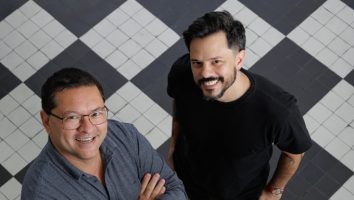Just when you thought you were getting a handle on all the departments of Disney, a new division, called Disney Regional Entertainment, was formed in February 1996 to capitalize on the growing popularity of ‘location-based entertainment,’ or kids and family play sites situated close to home. The division’s first venture, Club Disney in Thousand Oaks, California, was launched in February, with plans to roll out the concept to other locations nationwide over the next few years.
Located in a suburb 45 minutes from Los Angeles, the first Club Disney is housed in a free-standing 24,500-square-foot building with 30-foot-high ceilings. Four themed areas based on Disney properties and characters offer diverse play environments designed to encourage parents and kids to play together. Admission for each family member is US$8, which includes unlimited play time. According to a Disney spokesperson, attendance has far exceeded initial expectations.
‘We want to create a form of entertainment where parents have a very involved role, where they can bond with their kids,’ says Jay Rasulo, senior vice president of Disney Regional Entertainment. The Thousand Oaks site will be the prototype for clubs to come, he notes. ‘The selection criteria [for sites] will be: areas where there are lots of young families, as that is our target market, and sites that are easy for families to access in terms of driving and parking. They’ll be a pleasant experience in terms of getting the children from your home to Club Disney,’ he adds. Regarding the planned nationwide expansion of the concept, Rasulo would not reveal locations or dates. ‘We are going to expand cautiously,’ he says. ‘We want to make sure we walk before we run.’
Promotion of the new attraction has relied heavily on word of mouth. While the Club Disney launch was accompanied by public-relations campaigns and direct mail to educators, Rasulo says only ‘a very small amount’ of advertising announcing the grand opening was done. ‘That’s because typically what matters about an entertainment experience is what people say to [their] neighbors, relatives or friends,’ he notes.
Disney initiated the concept in response to a wide range of input from educators, parents and researchers, says Rasulo. ‘Regional entertainment is the outcome of an evolution of bringing entertainment experiences closer to people’s homes, so that they can consume entertainment on a more casual basis.’ A family might drive 10 minutes to drop in to Club Disney for a couple of hours, says Rasulo, whereas a trip to Disneyland might require hours of travel time and families would typically spend at least a whole day. ‘It’s a very different kind of entertainment experience from theme parks,’ Rasulo argues.
Disney planners spoke to parents through focus groups, conducted extensive research, and consulted educators and child development experts before going ahead with the project, says Rasulo. ‘From a marketing perspective, people are really looking for this kind of experience. At Club Disney, our mission is really based on that.’
In addition to the play sites, the first Club Disney encompasses a fast-food restaurant, a retail shop and six party rooms. Another attraction, EdVentures, features scheduled educational field trips within the club incorporating multimedia, science and the arts. Play sites include Pal-Around Playground, aimed at parents and kids; Curiosity Castle, which encourages exploration; Starring-You Studio, where kids can star in their own shows; and Chat Hat, about communication. Activities such as climbing, painting, surfing the Internet and role-playing in costume are all tied in to Disney properties. Outside the location, a 35-foot-tall inflatable Sorcerer Mickey from Fantasia welcomes visitors.
A major focus of the clubs is not only to attract new visitors, but to keep families coming back for more. ‘Families, and particularly children, enjoy new experiences. They enjoy doing something different every time they come back,’ says Rasulo. ‘Our programming software changes every week or every couple of weeks. Over time, we’ll certainly change the activities, change some of the play.’
‘When you rely on a local audience, you expect the same people to be coming back again and again,’ says Rasulo. ‘And we already have. They come back because they’ve heard there’s a new activity.’





















